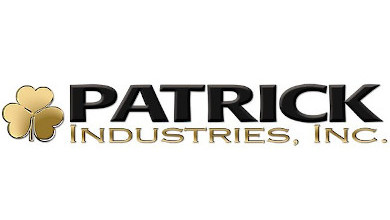Elkhart, Ind.-based Patrick Industries, a major manufacturer and distributor of component and building products for the RV, marine, manufactured housing and industrial markets, has reported a strong third quarter, with a 24 percent increase in net sales over the same period a year ago.
Patrick reported net sales of nearly $701 million and net income of $37 million, a 75 percent increase YOY.
The consolidated net sales increase in the third quarter of 2020 was attributed to sales increases in the RV, marine and industrial markets.
Net sales in the first nine months of 2020 decreased $73.6 million, or 4 percent, to $1.7 billion, from $1.8 billion in the first nine months of 2019.
“Our leisure lifestyle markets continued to rebound in the third quarter with a continuation of positive secular trends and tailwinds in on-the-road domestic travel and outdoor activities,” said Andy Nemeth, president and CEO. “Strong demand in our RV, marine and industrial markets resulted in improved profitability as we leveraged our fixed cost structure, despite direct labor inefficiencies due to the significant snap back in production levels which have exceeded pre-pandemic levels. The strategic acquisitions we completed in the third quarter of Inland Plywood, Synergy RV Transport and Front Range Stone capitalize on recent momentum, support customer growth and expand our product offerings in our end markets.”
Patrick’s RV sector, which is 60 percent of its overall revenue, saw a 36 percent increase in revenue, to $421.2 million, and wholesale RV unit shipments increased 33 percent.
Content per wholesale RV unit (on a trailing 12-month basis) was relatively flat.
The company’s marine division, which is 14 percent of its overall revenue, saw a 25 percent increase in revenue to 93.4 million.
The CEO said he likes what he sees looking ahead.
“Momentum in our RV and marine sectors is expected to remain strong, and our housing and industrial markets are experiencing tailwinds with low interest rates, an increase in home improvement activity, and urban to suburban and rural relocation trends,” said Nemeth. “We have strategically and aggressively pulled forward certain capital expenditure initiatives to ensure that we are in the best position possible with continued available capacity to support and grow with our customers for the 2021 model season and beyond. Our strong cash flows and liquidity allow us to invest in our businesses, continue to deploy strategic capital, and capitalize on growth opportunities as they arise in support of expansion necessary to serve our primary end markets over the long-term.”
